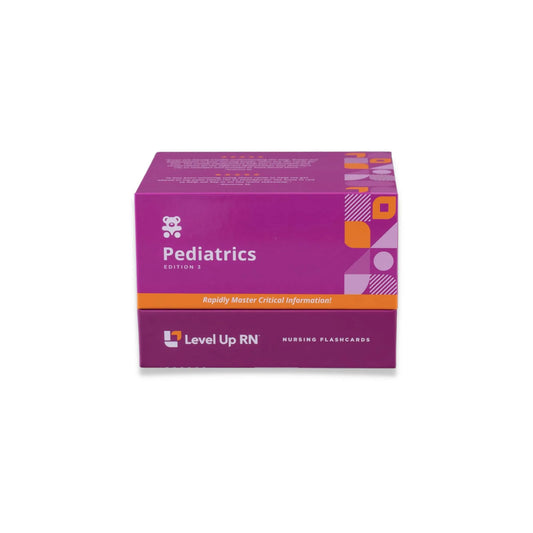Hi, I'm Cathy with Level Up RN. In this video, I am going to continue my coverage of renal system disorders from our Level Up RN Pediatric Nursing flashcards. Specifically, I will be talking about urinary tract infections or UTIs. And at the end of the video, I'm going to give you guys a little quiz to test your understanding of some of the key points I'll be covering. So definitely stay tuned for that. And if you have our flashcards, definitely pull out your flashcards on UTIs so you can follow along with me.
A UTI is an infection in any part of the urinary tract, but most commonly occurs in the bladder. So UTIs are typically caused by E. coli, which is a bacteria that is found in the stool. Risk factors that make it more likely that a child will develop a UTI include being female because females have a shorter urethra, and the urethra is in close proximity of the anus. In addition, children with vesicoureteral reflux or other anatomic abnormalities will have an increased likelihood for developing a UTI. And then constipation as well as poor toilet hygiene also place a child at increased risk for a UTI.
In terms of signs and symptoms of a urinary tract infection, it may not always be obvious when a baby has a UTI because the baby can't explain what feels wrong. Signs and symptoms in children under 2 may include fever, vomiting, fussiness, and poor feeding. In children over 2, signs and symptoms include painful and frequent urination, malodorous urine, as well as a fever. A urinary tract infection would be diagnosed with a urinalysis. And in young children, catheterization may be necessary in order to obtain a urine sample. So when a UTI is present, the urine will be positive for bacteria, white blood cells, leukocyte esterase, as well as nitrites. And then in some cases, blood may be present in the urine as well.
Treatment of a UTI includes the administration of antibiotics. And if an anatomic abnormality is causing frequent UTIs, then surgery may be necessary to correct the defect. Complications of a UTI include pyelonephritis, which is a kidney infection, as well as urosepsis, which is where the bacteria moves into the bloodstream, which is potentially life-threatening.
As the nurse, it's important to provide education to the families on how to prevent future UTIs. So first of all, drinking more water can help flush the bacteria out of the urinary tract. It also helps to prevent constipation, which is a key risk factor in the development of a UTI. In terms of toileting habits, it's super important to wipe front to back. This helps to prevent bacteria in the stool from getting into the urethra. Children should also empty their bladder regularly because if urine is sitting in the bladder for a prolonged period of time, it has a chance to grow and multiply. Children should wear cotton underwear and loose-fitting clothing so air gets into the area and the urethra stays dry. And then finally, bubble baths should be avoided.
All right. It's quiz time, and I've got four questions for you.
Question number one. UTIs are most commonly caused by what type of bacteria?
The answer is E. coli.
Question number two. Why are females at higher risk for UTIs?
The answer is their urethras are shorter and closer to the anus.
Question number three. Name three abnormal findings you would expect with a urinalysis when a UTI is present.
The answer is the urine will be positive for bacteria, white blood cells, leukocyte esterase, and nitrites, and possibly blood as well. So if you answered three of those things, you are right.
Question number four. What is the treatment for a urinary tract infection?
The answer is antibiotics.
All right. That is it for this video. I hope it was helpful. Take care, and good luck with studying.


